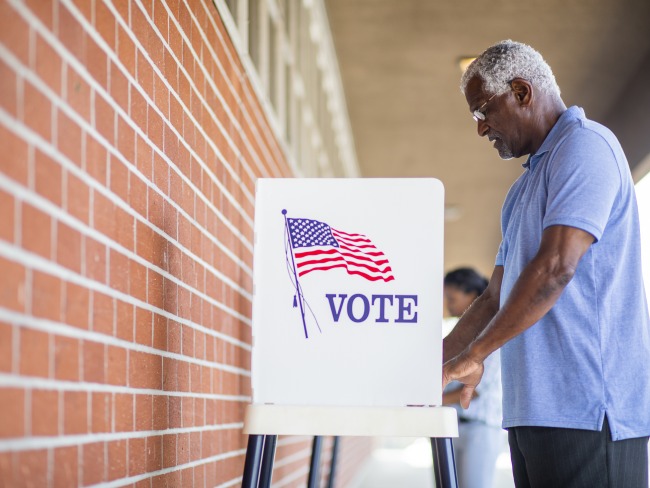U.S. Prison Decline: Insufficient to Undo Mass Incarceration
Although 44 states and the federal system have reduced their prison populations since reaching peak levels, the pace of reform has been slow to reverse nearly four decades of aggressive imprisonment growth that now exacerbates health risks during a pandemic.
Related to: Incarceration
By yearend 2018, the U.S. prison population reached 1.4 million people, declining by 9% since reaching its peak level in 2009. This follows a nearly 700% growth in the prison population between 1972 and 2009. This research brief reveals significant variation across states in decarceration and highlights the overall modest pace of reforms relative to the massive imprisonment buildup.
This analysis is based on the most recent data from the Bureau of Justice Statistics on people serving sentences greater than one year. Since the coronavirus pandemic in 2020, a number of states and the federal system have made additional, albeit modest, reductions in their prison populations. This analysis underscores the need to address excessively high levels of imprisonment amidst a public health crisis.
Significant variation across states
All but six states have reduced their prison populations since reaching their peak levels. For twenty-five states, the reduction in imprisonment levels was less than 10%. The federal prison population was downsized by 17% relative to its peak level in 2011.1
Seven states lead the nation, having decarcerated by over 30% since reaching their peak imprisonment levels: New Jersey, Alaska, Connecticut, New York, Alabama, Rhode Island, and Vermont.2
These prison population reductions are the result of a mix of changes in policy and practice designed to reduce prison admissions and lengths of stay. But six states had their highest ever prison populations in 2018: Wyoming, Nebraska, Iowa, Wisconsin, Kansas, and Oregon.
Modest pace of reforms
Although 44 states and the federal system have reduced their prison populations since reaching peak levels, the pace of reform has been slow to reverse nearly four decades of aggressive annual imprisonment growth. At the pace of decarceration since 2009, averaging 1% annually, it will take 65 years— until 2085—to cut the U.S. prison population in half. Clearly, waiting over six decades to substantively alter a system that is out of step with the world and is racially biased is unacceptable.
Next steps
The United States has made only modest progress in ending mass incarceration despite a dramatic decline in crime rates. Reported crime rates have plummeted to half of their 1990s levels—as they have in many other countries that did not increase imprisonment levels.3
Expediting the end of mass incarceration will require accelerating the end of the Drug War and scaling back sentences for all crimes, including violent offenses for which half of people in prison are serving time.4
Past reforms have helped to reduce the number of people imprisoned for a drug offense by 29% between peak year 2007 and 2017. The number of people imprisoned for a property offense has declined by 18% between peak year 2007 and 2017. But for the half of the prison population imprisoned for a violent crime—which ranges from certain burglaries, robbery, and assault to rape and murder—reforms remain the exception. Overall, the number of people imprisoned for a violent offense has only declined by 2% between peak year 2009 and 2017, despite substantial declines in violence since the mid-1990s.
The reluctance to scale back excessive sentences for this population is at odds with evidence that long sentences incapacitate older people who pose little public safety threat, produce limited deterrent effect, and detract from more effective investments in public safety. Expediting the end of mass incarceration will require making a meaningful dent into the number of people imprisoned for violence as well as intensifying sentencing reforms for non-violent crimes.
| 1. | This figure is based on the number of people serving sentences longer than one year. The Bureau of Prisons reports that the total population under its jurisdiction decreased by 22% between peak year 2013 and April 30, 2020. |
|---|---|
| 2. | Alaska and Alabama are poised to reverse some of this progress. Prompted by its governor, in 2019 Alaska’s state legislature repealed several aspects of a major criminal justice overhaul, Senate Bill 91. Alabama’s prison population increased by 6% between September 2018 and January 2020, and recent changes in the state’s parole policies and practices are poised |
| 3. | Federal Bureau of Investigations Uniform Crime Reporting Program. Doob, A., & Webster, C. (2006). Countering punitiveness: Understanding stability in Canada’s imprisonment. Law & Society Review, 40(2), 325–367; Tseloni, A., Mailley, J., & Garrell, G. (2010). Exploring the international decline in crime rates. European Journal of Criminology, 7(5), 375–394 |
| 4. | Carson, E. A. (2020). Prisoners in 2018. Bureau of Justice Statistics. Available at: https://www.bjs.gov/content/pub/pdf/p18.pdf |
to further undo the state’s decarceration.



